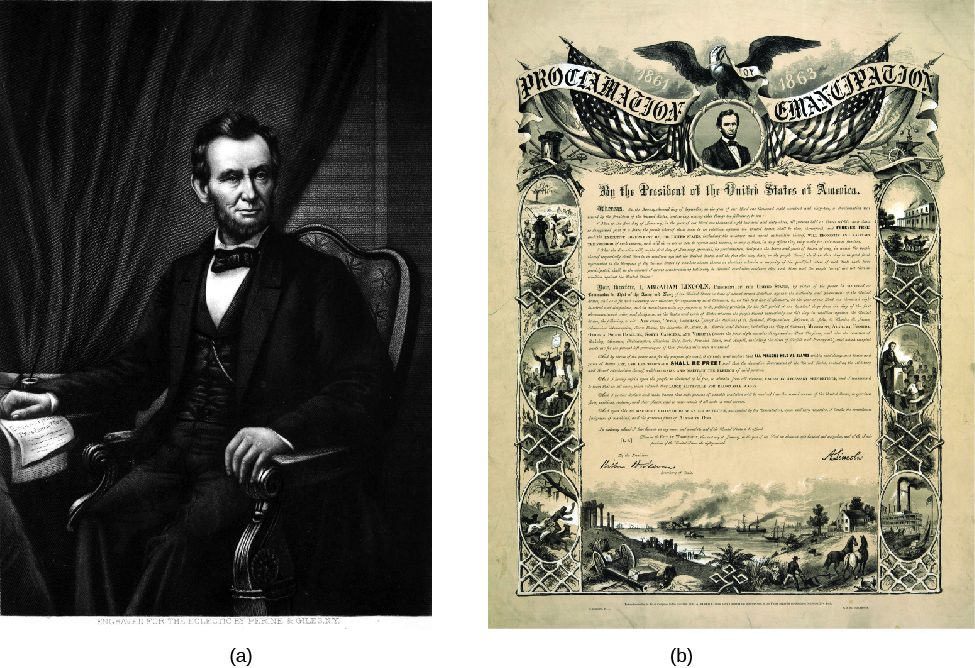| << Chapter < Page | Chapter >> Page > |
Ultimately, of course, the issue was decided by the
Civil War (1861–1865), with the southern states seceding to defend their “states’ rights” to determine their own destinies without interference by the federal government. Foremost among the rights claimed by the southern states was the right to decide whether their residents would be allowed to own slaves.

At the end of the Civil War, the South entered a period called Reconstruction (1865–1877) during which state governments were reorganized before the rebellious states were allowed to be readmitted to the Union. As part of this process, the Republican Party pushed for a permanent end to slavery. A constitutional amendment to this effect was passed by the House of Representatives in January 1865, after having already been approved by the Senate in April 1864, and it was ratified in December 1865 as the Thirteenth Amendment . The amendment’s first section states, “Neither slavery nor involuntary servitude, except as a punishment for crime whereof the party shall have been duly convicted, shall exist within the United States, or any place subject to their jurisdiction.” In effect, this amendment outlawed slavery in the United States.
The changes wrought by the Fourteenth Amendment were more extensive. In addition to introducing the equal protection clause to the Constitution, this amendment also extended the due process clause of the Fifth Amendment to the states, required the states to respect the privileges or immunities of all citizens, and, for the first time, defined citizenship at the national and state levels. People could no longer be excluded from citizenship based solely on their race. Although some of these provisions were rendered mostly toothless by the courts or the lack of political action to enforce them, others were pivotal in the expansion of civil rights.

Notification Switch
Would you like to follow the 'American government' conversation and receive update notifications?